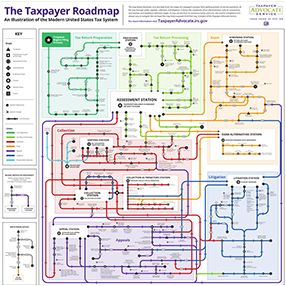Income Tax Withholding Calculations for Periodic Retirement and Annuity Payments

The Department of the Treasury recently announced that it would be updating the federal income tax withholding rules for periodic annuity and retirement payments made after December 31st of this year. Determining how these rules could affect your own withholding calculations can be a complicated process, so if you have questions about the new regulations, you should consider speaking with an experienced Florida tax & IRS attorney who can advise you.
Periodic Payments
Taxpayers with pensions, annuities, and other deferred sources of income, such as retirement accounts, are often subject to special withholding rules. Typically, payments that are subject to these withholding rules include periodic payments, as well as non-periodic distributions, and eligible rollover distributions. The newly proposed rules regarding calculating withholding amounts, however, currently only apply to periodic payments, a term that is defined as referring to a designated distribution or annuity. Designated distributions are further described as any payment under:
- An employer deferred compensation plan, such as a pension, annuity, stock bonus plan, or profit sharing plan;
- A commercial annuity, which includes endowments and life insurance contracts; or
- An individual retirement plan.
Annuities also include payments made by life insurance companies, banks, or other plans as long as those payments were made over a period of time greater than a year, regardless of whether the amounts are the same or vary.
Under federal regulations, payors of periodic payments are required to withhold an amount as if the payment were wages paid by an employer to an employee unless:
- The payment qualifies as an eligible rollover distribution;
- The payee doesn’t furnish his or her Taxpayer Identification Number (TIN); or
- The periodic payments in question must be delivered outside of the U.S.
For help determining whether one of these exceptions applies to your own withholding situation, please call our office today.
Proposed Regulations
Before the passage of the Tax Cuts and Jobs Act (TCJA), taxpayers who did not have a withholding certificate in effect for periodic payments and who didn’t fall under one of the aforementioned exceptions were required to calculate the amount to be withheld from their payments as though they were married individuals who were claiming three withholding exemptions.
Although the same rule will remain in place for calculating the default rate of withholding from periodic payments for 2020, future calculations will be determined based on a new set of undisclosed regulations provided by the IRS and the Treasury Department. According to the IRS’ recent statement, the new calculation regulations will apply to periodic payments made after December 31, 2020.
Call Today for Legal Assistance
If you receive periodic payments from an annuity or retirement account and have questions about how much to withhold from those payments, please call experienced Florida tax attorney Ronald Cutler, P.A. at 386-490-9949 to learn more about the new regulations proposed by the IRS and how they could affect your own tax return. Initial consultations are offered free of charge, so please don’t hesitate to call or contact us online at your earliest convenience.
Resource:
federalregister.gov/documents/2020/05/27/2020-10679/income-tax-withholding-on-certain-periodic-retirement-and-annuity-payments-under-section-3405a



